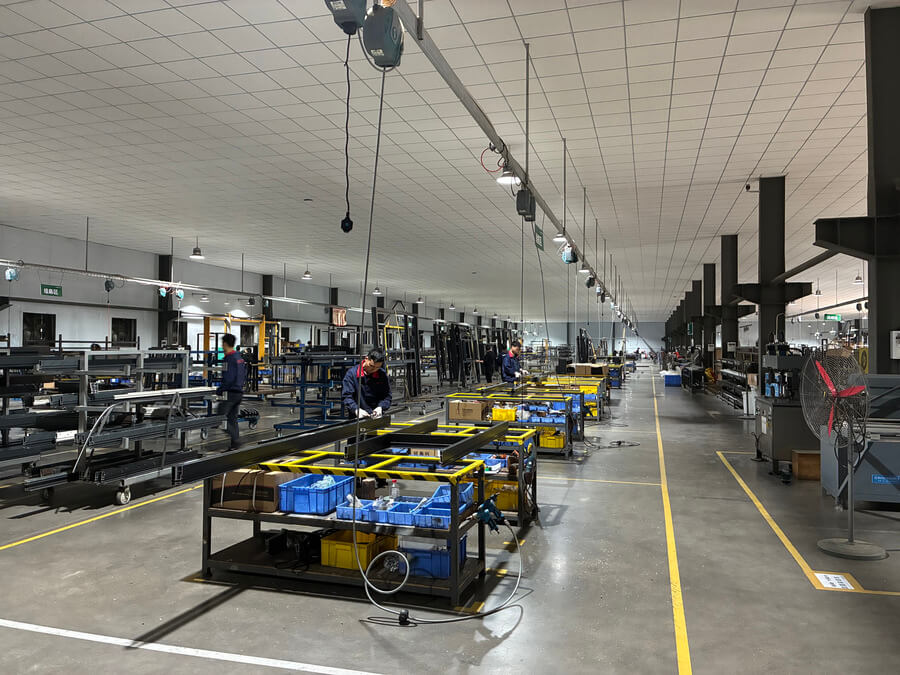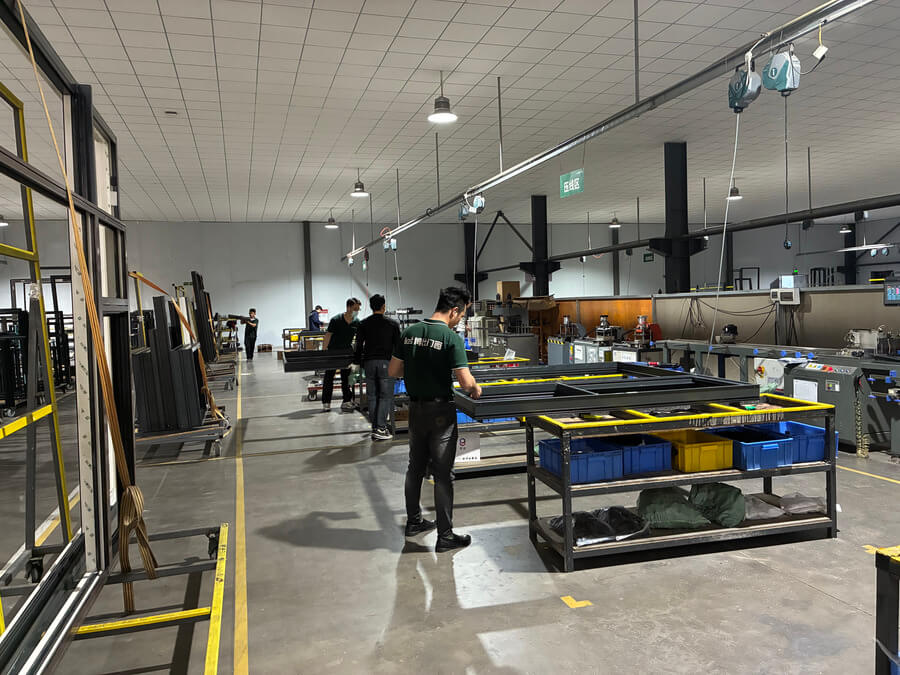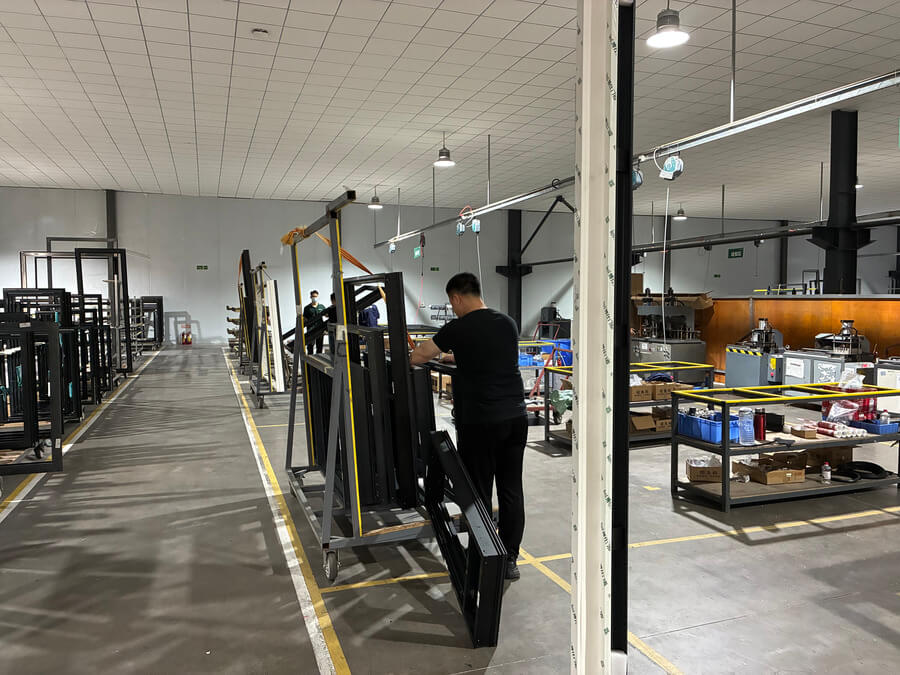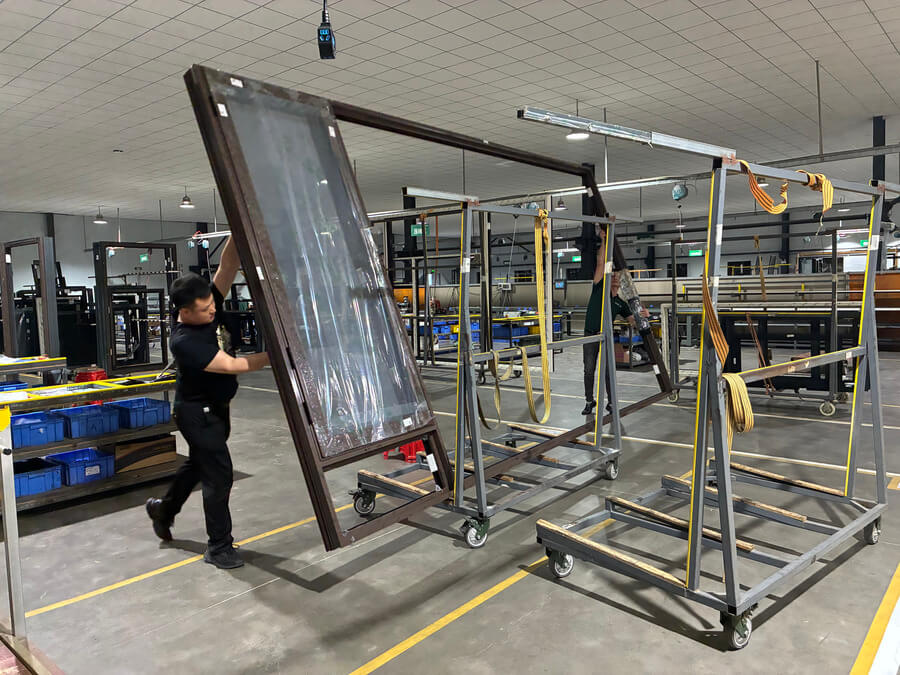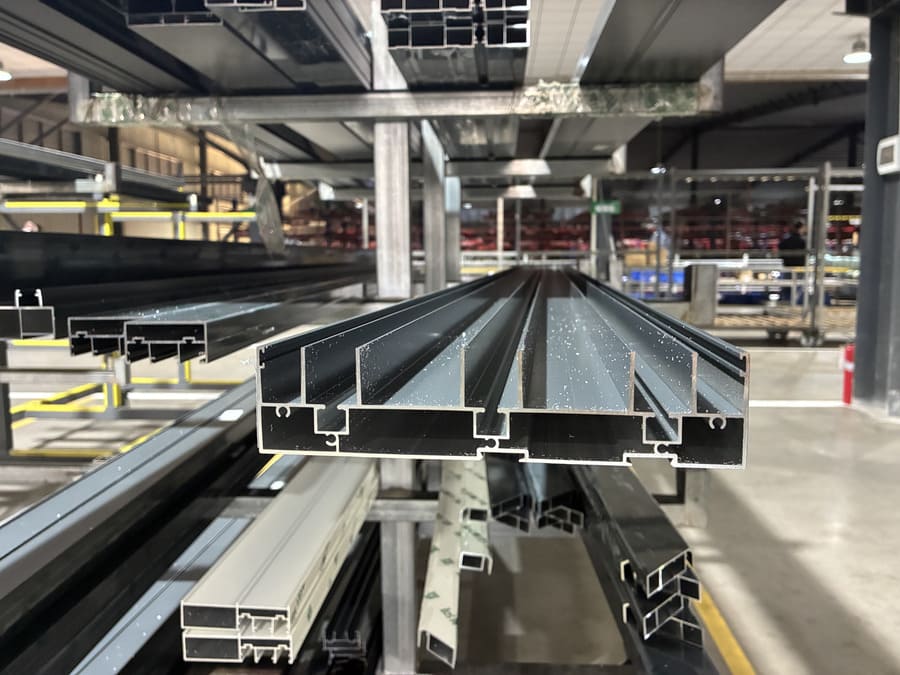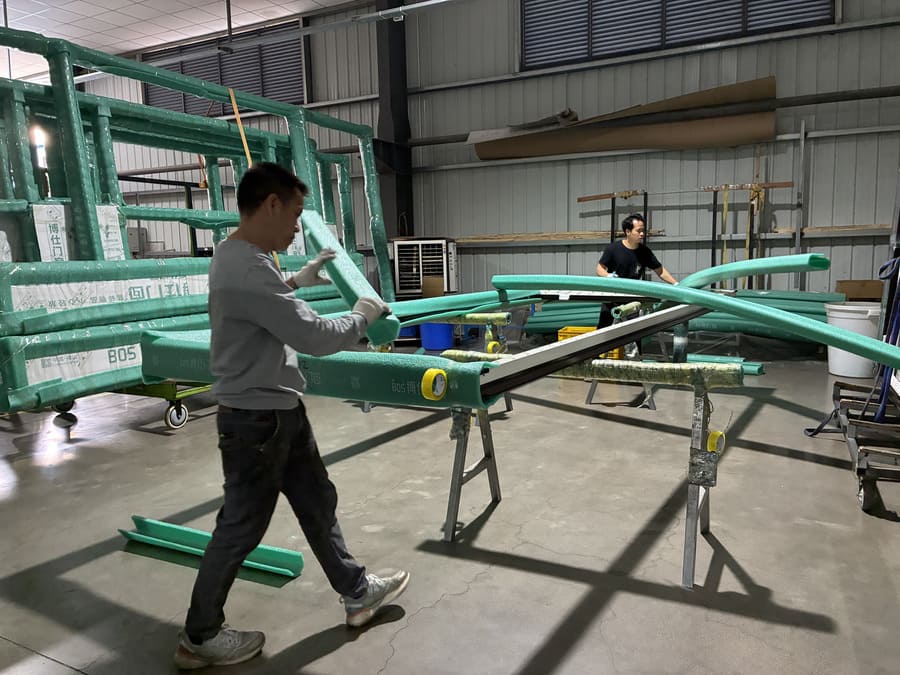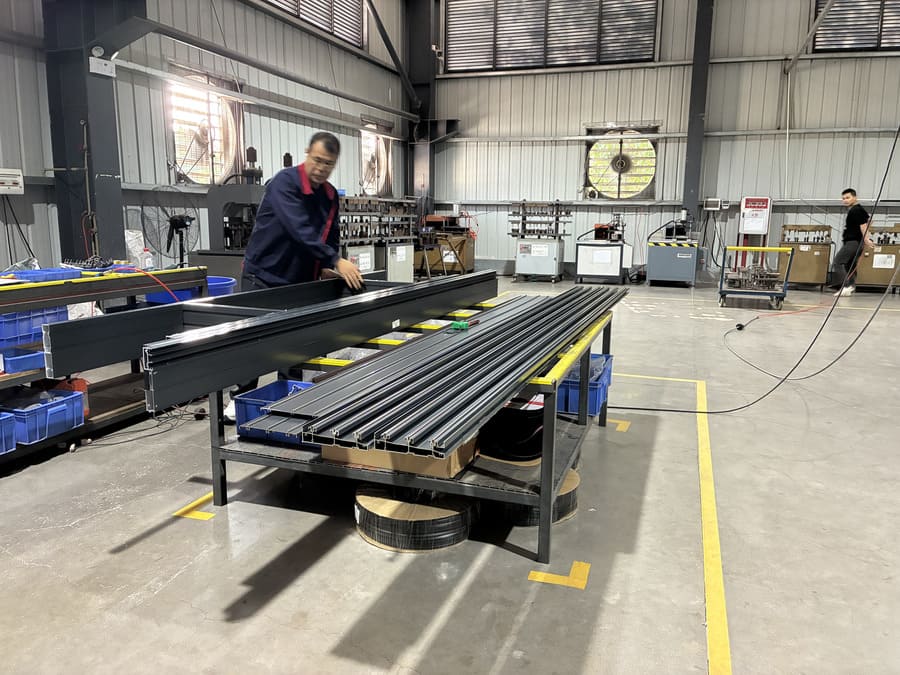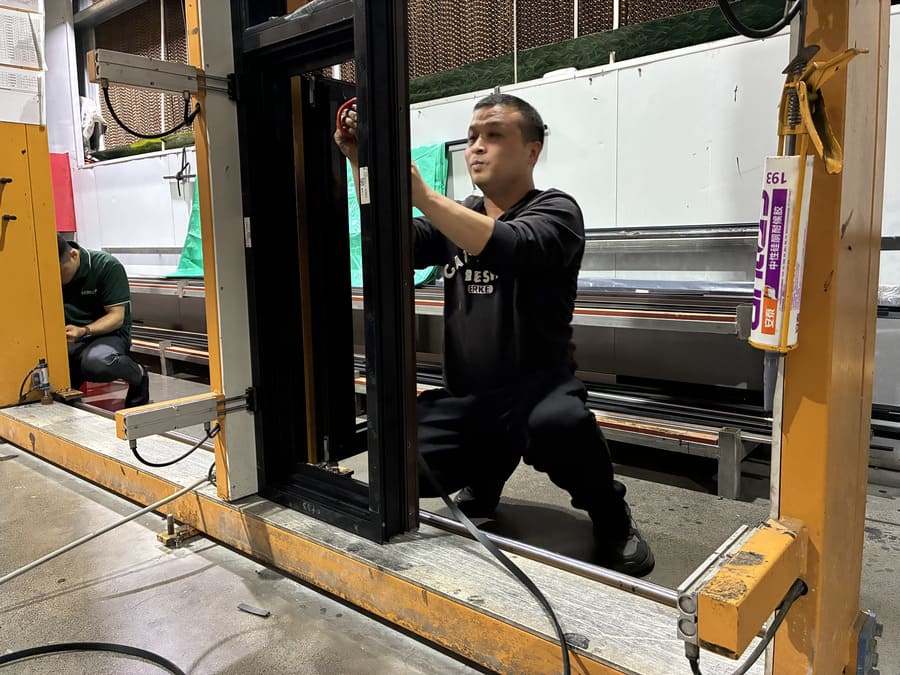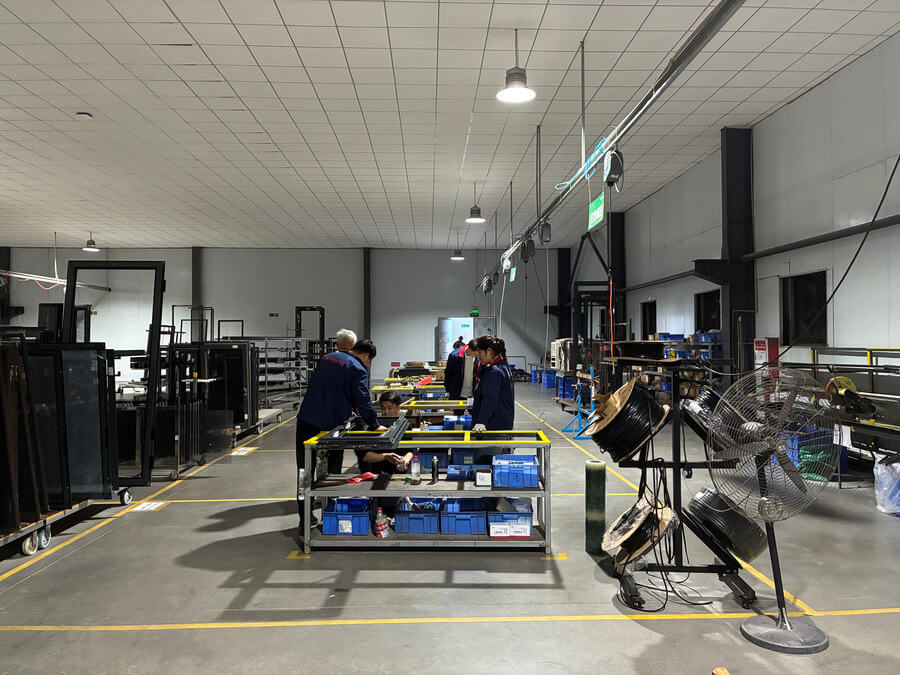What are Automated Windows and How Do They Work?

Automated windows and doors are revolutionizing the way we interact with our living and working spaces. Instead of manually cranking open a casement window or struggling with heavy sliding doors, automation brings effortless control to your fingertips. At its core, window and door automation involves integrating motorized systems and sensors into your window frame or door structure. These systems allow you to open or close your windows and doors automatically, often with the push of a button, a tap on your smartphone, or even through voice commands.
Think of it as upgrading your traditional windows with smart technology. These systems typically use small, powerful motors that are discreetly installed on-unit, meaning they are integrated within the window or door frame itself, maintaining a clean and seamless design experience. These motors are connected to control systems, which can range from simple wall-mounted switches to sophisticated home automation systems. Sensors play a vital role too, detecting things like rain, temperature, or even security breaches, and triggering automatic actions like closing windows when it starts to rain or alerting you to an unexpected opening. This intelligent integration of mechanics and electronics is what makes automated windows not just convenient, but truly smart.
Why Should You Automate Your Windows and Doors?
The benefits of automating your windows and doors extend far beyond simple convenience. Imagine this: you’re a villa owner, enjoying a beautiful evening, but suddenly a summer shower begins. Instead of rushing around to close all the windows, your smart home system, equipped with automated windows, senses the rain and closes them for you. Or picture a hotel property company purchasing manager overseeing a large project. Implementing automated windows across all rooms not only adds a touch of luxury but also provides centralized control for ventilation and energy management, making operations smoother and more efficient.
For homeowners, builders, architects, and engineers alike, the appeal is multifaceted:
- Unmatched Convenience: Open and close hard-to-reach windows with ease, perfect for high ceilings or awning windows. Adjust the windows without interrupting your activities.
- Enhanced Comfort: Maintain a comfortable indoor climate effortlessly. Schedule windows to open and close at specific times for natural ventilation, cooling your home and ensuring a flow of fresh air.
- Increased Accessibility: Make window operation easy for everyone, including the elderly or those with mobility limitations.
- Modern Design and Luxury: Automated systems add a touch of modern sophistication and luxury to any building, appealing to discerning homeowners and enhancing property value.
Automated windows are not just a fancy upgrade; they are a practical solution that simplifies daily life and enhances the functionality of any building.
Boosting Home Safety with Smart Window Automation
Home safety is paramount, and automated windows offer significant advantages in this area. Imagine being a homeowner concerned about home security. With traditional windows, leaving them open even slightly while you’re away can be a security risk. However, with automated window systems, you can integrate them with your home security setup for enhanced protection.
Here’s how automated windows contribute to home safety:
- Remote Monitoring and Control: Check the status of your windows from anywhere using your smartphone. If you’ve left a window open by mistake, you can close it remotely, providing peace of mind whether you are at work or on vacation.
- Integration with Security Systems: Automated windows can be linked to your home security system. If an unauthorized window opening is detected, it can trigger an alarm, alerting you and potentially security services to a possible intrusion.
- Automated Closing in Unforeseen Circumstances: Sensors can be programmed to automatically close windows in response to sudden weather changes like strong winds or heavy rain, preventing damage and potential water ingress.
- Simulated Occupancy: When you are away, you can program your automated blinds and shades, along with your windows, to open and close at set times. This gives the appearance of occupancy, deterring potential intruders and enhancing home security.
By incorporating smart window automation, you are not just adding convenience; you are actively strengthening your home security measures, providing an extra layer of protection for your property and loved ones.
Can Automated Windows Increase Energy Efficiency?

In today’s world, energy efficiency is not just a trend; it’s a necessity. Automated windows play a crucial role in optimizing energy consumption and promoting energy savings within buildings. For construction engineers and hotel purchasing managers focused on sustainable and cost-effective solutions, automated windows are an invaluable asset.
Consider these energy-saving benefits:
- Optimized Natural Ventilation: Automated windows can be programmed to open and close based on temperature and humidity sensors. During cooler times of the day, they can open automatically to allow natural ventilation to cool the house, reducing the need for air conditioning and lowering energy consumption.
- Reduced HVAC Usage: By strategically utilizing natural ventilation through automated window operation, you can significantly decrease your reliance on energy-intensive heating, ventilation, and air conditioning (HVAC) systems.
- Smart Shading Integration: Automated windows can work in tandem with automated shades or blinds. During peak sunlight hours, blinds and shades can automatically lower to reduce solar heat gain, keeping interiors cooler and further minimizing air conditioning needs.
- Energy Monitoring and Management: Advanced home automation systems can track window operation and energy usage, providing data insights to further optimize energy efficiency and identify potential areas for savings.
By intelligently managing natural light and ventilation, automated windows contribute significantly to energy efficiency, translating to lower utility bills and a reduced environmental footprint. This is a major selling point for homeowners and a key consideration for large-scale projects seeking to meet sustainability goals.
What Types of Doors and Windows Can Be Automated?

The versatility of automation technology means that a wide range of doors and windows can be motorized and integrated into smart home systems. Whether you are an architect designing a modern villa or a homeowner planning renovations, you’ll find automation options to suit various styles and functional needs.
Here are some popular types of doors and windows that can be automated:
- Casement Windows: Hinged at the side and swinging outward, casement windows are ideal for automation. Motorized operators can easily crank them open and closed smoothly and quietly. Explore our range of casement windows.
- Awning Windows: Hinged at the top and opening outward, awning windows are perfect for ventilation even during light rain. Automation makes them easily accessible, especially when placed higher up on walls. Learn more about awning window options.
- Sliding Doors and Windows: From standard sliding windows to expansive multi-slide doors, automation removes the effort of manual operation, making large glass panels glide effortlessly. Discover our multi-slide doors.
- Skylights and Roof Windows: Automating skylights and roof windows makes it easy to control ventilation and light in hard-to-reach areas, enhancing both comfort and energy efficiency.
- Even Existing Windows (in some cases): Retrofit automation kits are available for certain types of existing windows, making it possible to upgrade your current home without full window replacement.
From classic casement styles to modern multi-slide configurations, the possibilities for door and window automation are extensive, allowing you to create truly smart and responsive building envelopes.
How Easy is it to Use Home Automated Windows?
One of the biggest advantages of automated windows is their ease of use. Smart technology should simplify life, and these systems are designed with user-friendliness in mind, making them easy for everyone, from tech-savvy homeowners to hotel guests, to operate.
Here are several ways you can control your automated windows:
- Wall-Mounted Keypads or Switches: Simple and intuitive, wall-mounted controls offer a straightforward way to open and close windows with the push of a button.
- Remote Controls: Handheld remote controls provide convenient operation from anywhere in the room, much like controlling your TV.
- Smartphone Apps: Control your windows from anywhere in the world using dedicated smartphone apps. Check window status, set schedules, and operate them remotely for ultimate convenience and peace of mind.
- Voice Assistants: Integrate with voice assistants like Alexa or Google Assistant for hands-free operation. Simply use voice commands such as “Alexa, open the living room windows” for effortless control.
- Integration with Home Automation Systems: For comprehensive smart home control, automated windows can be integrated with broader home automation systems, allowing for synchronized operation with lighting, heating, security, and other smart devices.
The goal is to make interacting with your automated windows as seamless and natural as possible. Whether you prefer a traditional wall switch or the latest voice-activated technology, there’s a control method to suit your preferences and ensure easy operation for all users. See our selection of smart home compatible windows.
Choosing the Right Automation Options for Your Needs
Selecting the right automation options depends on your specific needs, budget, and project requirements. As a doors and windows manufacturer in China, Boswindor offers a range of automation solutions to cater to diverse customer needs. When considering automation, think about these key factors:
- Type of Window or Door: Ensure the automation system is compatible with the type of windows or doors you are using (casement, awning, sliding, etc.).
- Control Preferences: Decide which control methods are most important to you – wall switches, remote controls, smartphone apps, voice control, or integration with existing home automation systems.
- Sensor Integration: Consider if you need sensors for rain, temperature, humidity, or security, and ensure the system supports these integrations.
- Power Source: Automated systems typically require a power source. Consider whether you need wired or wireless solutions and ensure appropriate electrical provisions are in place.
- Professional Installation: Proper installation is crucial for optimal performance and longevity. Choose a reputable installer experienced with window and door automation systems.
- Budget: Automation systems vary in price. Determine your budget and explore options that offer the best balance of features and value.
By carefully evaluating these factors and consulting with experts, you can choose the ideal automation options to maximize the benefits of smart windows and doors in your project. Boswindor provides expert guidance and a variety of window and door solutions to help you make the best choices.
FAQs About Automated Windows
What happens to automated windows during a power outage?
Most automated window systems can be manually operated in case of a power outage. Many also offer battery backup options to ensure continued operation for a limited time during power interruptions.
Are automated windows noisy?
Modern automated window systems are designed for quiet operation. The motors used are typically very quiet, ensuring minimal noise disruption.
Can I automate my existing windows?
In some cases, yes. Retrofit automation kits are available for certain types of existing windows. However, it’s best to consult with a professional to assess compatibility and feasibility.
Key Takeaways:

- Automated windows and doors offer unparalleled convenience and ease of use, operated at the push of a button or through smart home integration.
- Smart window automation significantly enhances home safety and security through remote monitoring, security system integration, and automated responses to environmental changes.
- Automated windows contribute to energy efficiency by optimizing natural ventilation, reducing HVAC usage, and integrating with smart shading solutions.
- A wide variety of window and door types can be automated, offering design flexibility for any project.
- Ease of use is a key feature, with multiple control options available, including wall switches, remote controls, smartphone apps, and voice assistants.
- Careful consideration of your needs, budget, and available options is essential to choosing the right automation system.
Ready to experience the future of windows and doors? Contact Boswindor today to explore our range of automated window and door products and discover how we can help you automate your view and automate your life!







